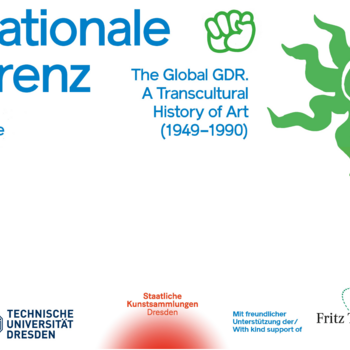Counterpoints (2022/23)
In 2022 and 2023, Staatliche Kunstsammlungen Dresden are fixing their gaze once again on GDR times in their research and exhibition project “Kontrapunkte” (“counterpoints”). Based on their own holdings and the history of their collection, fresh perspectives are being developed on art in the GDR, how it was seen and the significance allotted to it in the past and present, with the addition of international viewpoints.
The "ostZONE" series, part of the special exhibition "Revolutionary Romances? Global Art Histories in the GDR", created a space within the Albertinum for anyone to share conversations, questions, and memories of life in the GDR and in modern-day eastern Germany. Leading the workshop "Your Message - Your Poster - Print it yourself with Screen Printing", Moussa poses questions about peace, immigration and the future.
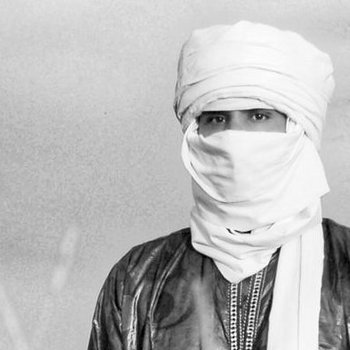
The "ostZONE" series, part of the special exhibition "Revolutionary Romances? Global Art Histories in the GDR", created a space within the Albertinum for anyone to share conversations, questions, and memories of life in the GDR and in modern-day East Germany. In cooparation with the Kultur Aktiv e.V., Dr. Verena Böll initiated projects on biographical retellings in combination with art and handicraft.
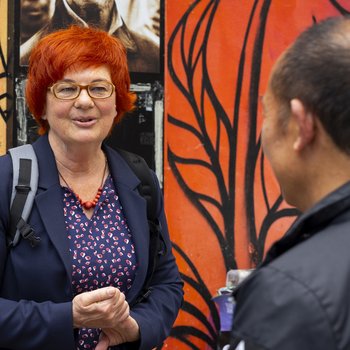
The German "Indianthusiasm" is a phenomenon playing out in the space between wanderlust, political solidarity, exoticism, a thirst for adventure and cultural appropriation. We spoke to the indigenous professor Renae Watchman and the Indianist Sigfired Jahn about the German hobbyism.
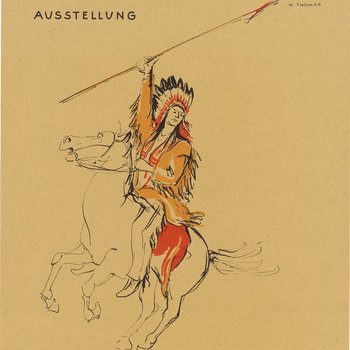
From March to May of 2024 four Live Speakers from the Grassi Museum of Ethnography have investigated the connection between the museum of ethnology and the community in the past and present. They have developed works of art reflecting their own actions as Live Speakers at the museum.
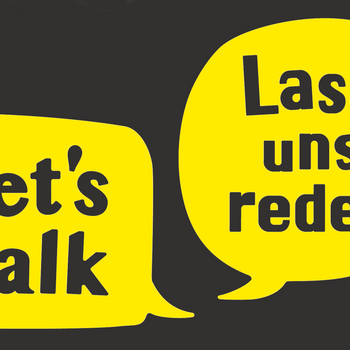
The "ostZONE" series, part of the special exhibition "Revolutionary Romances? Global Art Histories in the GDR", created a space within the Albertinum for anyone to share conversations, questions, and memories of life in the GDR and in modern-day eastern Germany. Julia Eberth and Marí Bohley reflect on their workshop “Mail Art - Letters as Art” and share experiences of repression in the GDR.
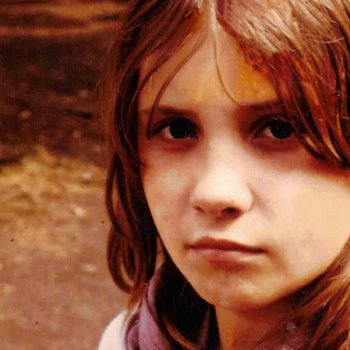
The "ostZONE" series, part of the special exhibition "Revolutionary Romances? Global Art Histories in the GDR", created a space within the Albertinum for anyone to share conversations, questions, and memories of life in the GDR and in modern-day eastern Germany. During the city walk through the Neustadt “The Neustadt between Hanoi and Havana”, Dr. Hussein Jinah invited participants into the Spätshop where he works and told them about his history and his goals: To promote peace, cohesion and non-violence in society.
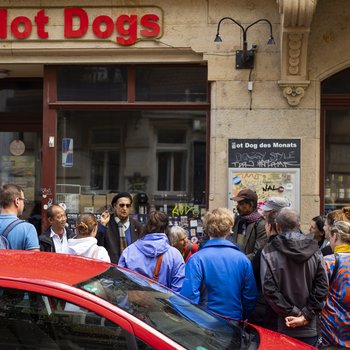
What declares itself to be nonsense declares itself to be harmless. Supposedly. Because the consequence of such self-determination is the famous jester's license, which a group of theater people in the GDR also claimed for themselves in the 1980s when they called themselves “Zinnober” and began making Punch and Judy shows for adults. Their play “Die Jäger des verlorenen Verstandes” (Raiders of the Lost Mind) can easily be read by the audience as a mockery of the GDR state system and its toleration is hard to believe in retrospect - but true.
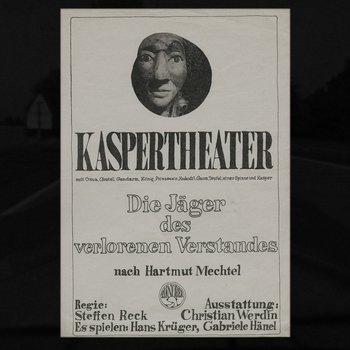
Der etwa 20-minütige Film „Ein weites Feld. Grüne Rückzugsorte ostdeutscher Künstlerinnen“ von Susanne Altmann entstand 2023 in vier ostdeutschen Gärten und zeigt, wie Systemverweigerung auch aussehen konnte. Vier Künstlerinnen schufen sich jeweils ländliche Refugien, in denen sie inspiriert und unbeobachtet arbeiten konnten und eigene Netzwerke knüpften. Mit Erika Stürmer-Alex, Amrei Bauer für Annemirl Bauer, Christa Jeitner und Christine Schlegel.
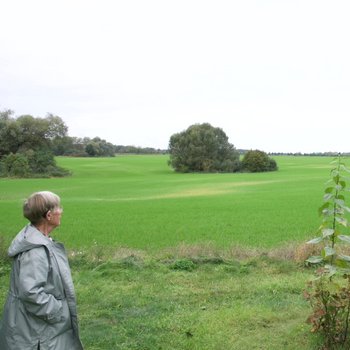
Susanne Altmann diskutiert mit Johanna Kalex, Verena Kyselka, Ulrike Poppe und Karla Woisnitza darüber, wie Rebellion gegen das starre DDR-System in den 1980er Jahren aussah: in kirchlichen Kreisen, in der unabhängigen Friedensbewegung und in der nichtkonformen Kunstszene. Doch nicht nur um Erinnerungen soll es gehen, sondern auch darum, zu zeigen, dass Frauenpower damals den Gang der Geschichte beeinflusste. Ihre Aktionen schließen nahtlos an heutige, feministische Proteste in Diktaturen und Konfliktzonen an.
The "ostZONE" series, part of the special exhibition "Revolutionary Romances? Global Art Histories in the GDR", created a space within the Albertinum for anyone to share conversations, questions, and memories of life in the GDR and in modern-day eastern Germany. Bela Álvarez organized the "Holding the Strings" ("Die Fäden in der Hand halten") workshop, bringing the power of images as well as the power of our hands into focus.
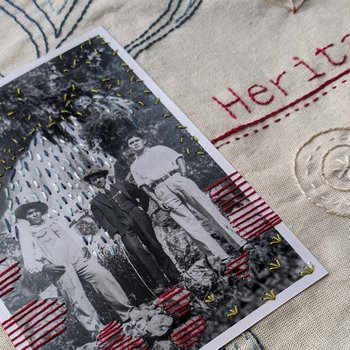
The "ostZONE" series, part of the special exhibition "Revolutionary Romances? Global Art Histories in the GDR", created a space within the Albertinum for anyone to share conversations, questions, and memories of life in the GDR and in modern-day eastern Germany. Read about Hung The Cao and his workshop with contemporaries "Jeans nach Dienstschluss" ("Jeans after Hours").
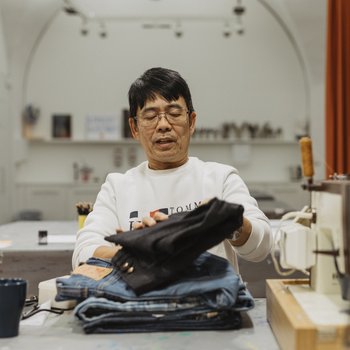
Relations between Japan and the GDR are as deep as they are unexplored. The two countries had built up a multi-layered relationship with each other. Japan was seen as an economic bridge between the GDR's socialist system and the capitalist West. How did the GDR and Japan find ways to exchange art across the Iron Curtain?
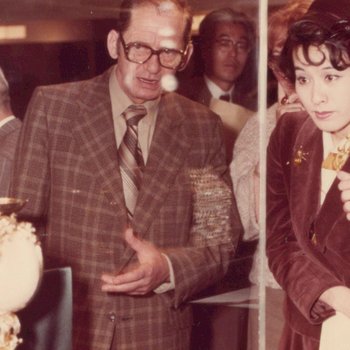
Das internationale Symposium „REISE(UN)FREIHEIT – Mobilitäten von Künstler*innen während des Kalten Krieges“ widmete sich dem komplexen Spannungsfeld von Reisemöglichkeiten und Reiseverboten, die Künstler*innen im Kontext des Staatssozialismus, besonders in der DDR, betrafen. Während „Künstlerreisen“ bis in die 1930er Jahre einen bekannten kunsthistorischen Topos darstellen, ist die Mobilität von Künstler*innen nach dem Zweiten Weltkrieg bisher wenig erforscht. Welche Bedeutung hatte also das Reisen für künstlerische Praktiken in der zweiten Hälfte des 20. Jahrhunderts?
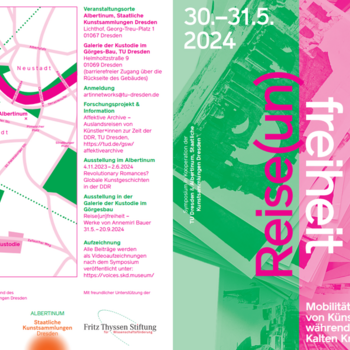
Starting in the 1970s, a type of artistic dialogue developed in East Germany that took place not in museums and galleries but, instead far from the world of public exhibitions, via the postal service. Soon after, the Dresden artist Birger Jesch launched what he called the “first Mail-Art Project of Dresden”, posting 300 cards featuring shooting targets to recipients around the world, for them to design and return.
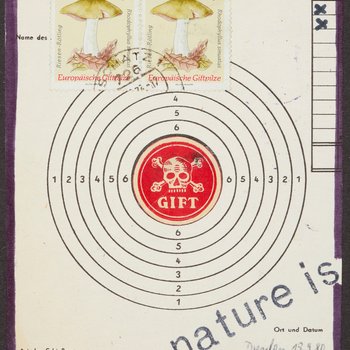
Das TU-Projekt "Art in Networks" möchte die Verbindungen von Künstler*innen, Architekt*innen, Museen und anderen kulturellen Akteur*innen zwischen der DDR und Ländern in Afrika, Asien und Lateinamerika sichtbar machen und den dabei entstandenen internationalen Netzwerken nachspüren. Dazu entstanden Text- und Videobeiträge, die hauptsächlich auf Interviews mit Zeitzeug*innen basieren. Die Ziele des Projekts sind daher ganz ähnlich zum Projekt "Kontrapunkte" und so bot es sich an, Kerstin Schankweiler und die Künstler Abed Abdi und Michael Touma auch zu einem Gespräch ins Albertinum einzuladen.
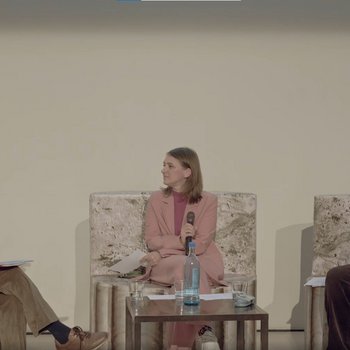
The Kupferstich-Kabinett is home to a significant collection of Cuban prints and posters that came to the GDR after the Cuban Revolution in 1959. While they were earmarked for the collection as part of the cultural exchange between the two socialist states, its director often did not welcome them with open arms. Olaf Simon, conservator at the Kupferstich-Kabinett, wrote about how they came to be part of the collection.
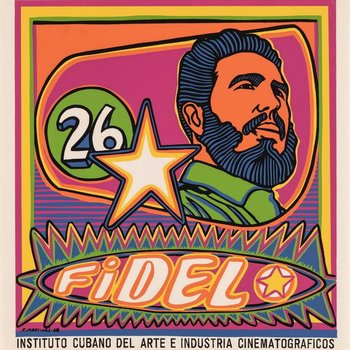
Pamela Meyer-Arndt's film "Rebellinnen" is dedicated to the artistic urge for freedom of three female artists in the GDR in the 1970s and 80s. The director, two of the artists - Tina Bara and Gabriele Stötzer - and Dr Angelika Richter came together at the Albertinum for a discussion in which they talked about the making of the film as well as the living conditions and artistic hardships of those years.
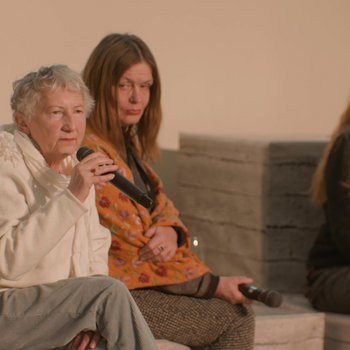
The “Revolutionary Romances? Global Art Histories in the GDR” exhibition features terms that refer both to current research and past political events. We have compiled a glossary to make them more accessible to visitors from various generations. It does not claim to be exhaustive; it is merely intended to help understand the historical and scientific contexts of the exhibition. Ultimately, the terms can inspire visitors to think about the present.
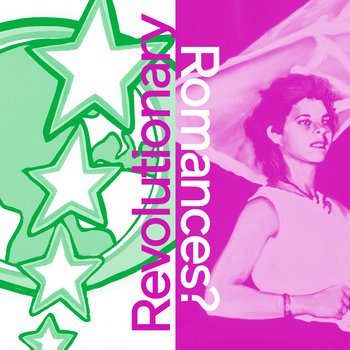
Qingmei YAO's film “The Trial” is currently showing in our series on China, as part of the “Counterpoints” project. The film is conceived as an absurdist stage play in which Yao herself performs as a military figure in uniform, interrogating a Coke vending machine. In this interview she talks about how the idea came about and the ambivalence of China’s position straddling socialism and turbo-capitalism.
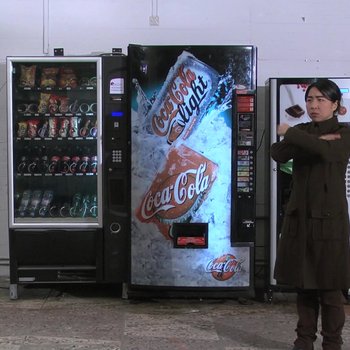
Musquiqui Chihying and Gregor Kasper’s film “The Guestbook” can currently be seen in our series on China as part of the “Counterpoints” project here on voices. The curator of the series, Mia Yu, interviewed them for us.
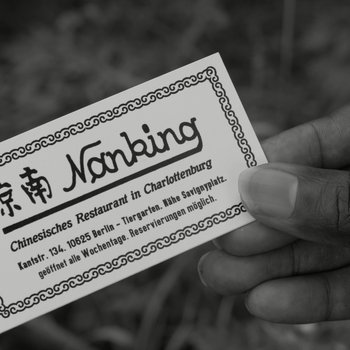
As well as upholding traditions, high priority was given to emerging contemporary artistic trends, which are the focus of Part 4 of our MeissenLab. Workers from the manufactory, many selected from among the existing staff, studied at established GDR art academies with the aim of creating artistically sophisticated porcelain both for domestic sale and for export.
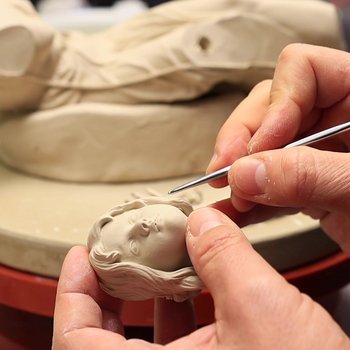
Part 3 of MeissenLab is about trade with countries outside the socialist bloc. The most important sales market was West Germany. In the 1980s, Japan also rose to a prominent position, with the GDR maintaining close diplomatic and economic ties.
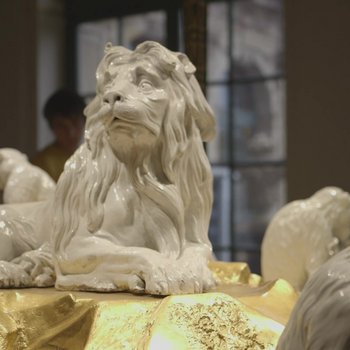
Part 2 of MeissenLab examines corporate culture and production at the Meissen manufactory in GDR times. Tradition is key here; some Meissen families can trace their employment at the “Manu” as far back as the 18th century.
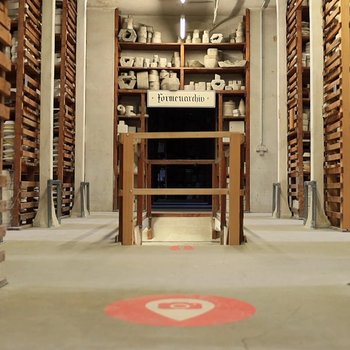
For East Germany, Meissen Porcelain Manufactory was a prestigious, showcase company of worldwide repute and an important source of foreign currency earnings. As part of today’s “Kontrapunkte” (Counterpoints) project, members of the SKD’s FUTUR III youth advisory board talked to people who experienced the GDR era first-hand, at the spot where it all happened: the Meissen manufactory’s ceramic moulds depot.

On 13 October 2022, the Albertinum of the Staatliche Kunstsammlungen Dresden hosted the conference “Revolutionary Romances: Into the Cold – Alternative Artistic Trajectories into (Post-)Communist Europe.” A report by Julia Tatiana Bailey and Christopher Williams-Wynn.
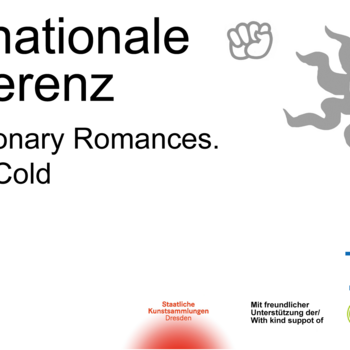
How did female designers work in the GDR? What challenges did they face, especially as freelancers, which was not an official status in the country? What promises guided their work and what significance did themes such as inclusion and sustainability hold for them, themes that have lost none of their relevance today? Which creative niches could they carve out for themselves within the system? These and other questions will be addressed in the "Round Table" discussion format developed to accompany the exhibition "German Design 1949-1989. Two Countries, One History."
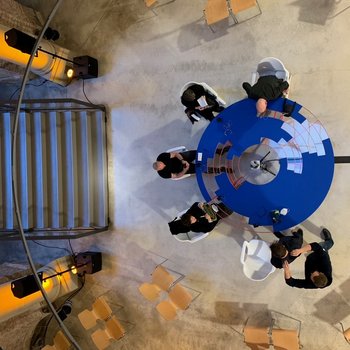
The annihilation of Vinh City by US bomb raids offered an opportunity for experimental planning and for transforming the small industrial town into a model socialist city. The GDR’s ambitious task of comprehensive reconstruction involved working collectively on both the creation of a master plan and its realization in built form. Christina Schwenkel on the Quang Trung housing complex.
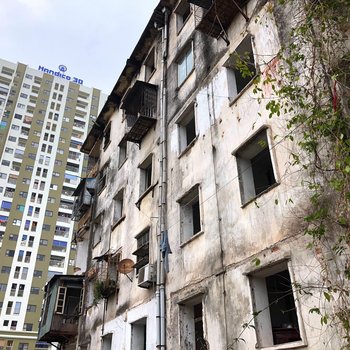
Arlette Quynh-Anh Tran curated the first of our film series for the Kontrapunkte project, which deals with the cultural interweavings of the GDR and Vietnam. In conversation with Kathleen Reinhardt from the Albertinum, she explains the questions that preoccupied her in the process.
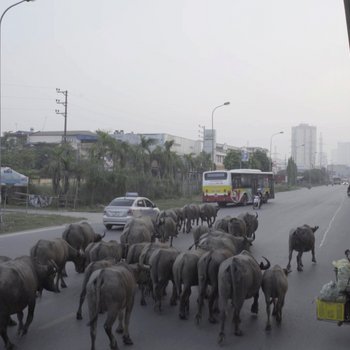
In 2022 and 2023, Staatliche Kunstsammlungen Dresden are fixing their gaze once again on GDR times in their research and exhibition project “Kontrapunkte” (“counterpoints”), funded by the German Federal Cultural Foundation. Based on their own holdings and the history of their collection, fresh perspectives are being developed on art in the GDR, how it was seen and the significance allotted to it in the past and present, with the addition of international viewpoints. To this end, a range of physical and digital formats are in the pipeline, information on which will be provided on this platform.
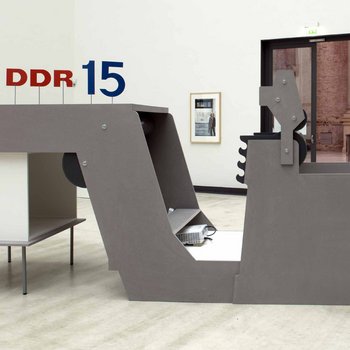
In the spring of 2020, a very special troupe of brightly coloured figures took up residence in the depot of the Puppentheatersammlung. Fishers and farmers, musicians and child gymnasts, not to mention ducks, water buffalos, dragons and fairies. They all belong to the classic cast of Vietnamese water puppetry.
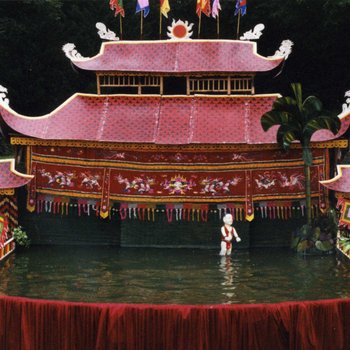
For the “Counterpoints” project, the SKD are studying the international history of the East German cultural sector - a project about the history of their own collection; about dialogue and networking. Above all, however, it is about correcting the narrative describing that history as provincial and isolated from modernism. In June, TU Dresden’s Chair of Visual Culture Studies in a Global Context organised a conference on the ties between the GDR cultural sector and the Global South, working with the Albertinum and the TU Office for Academic Heritage, Scientific and Art Collections.
